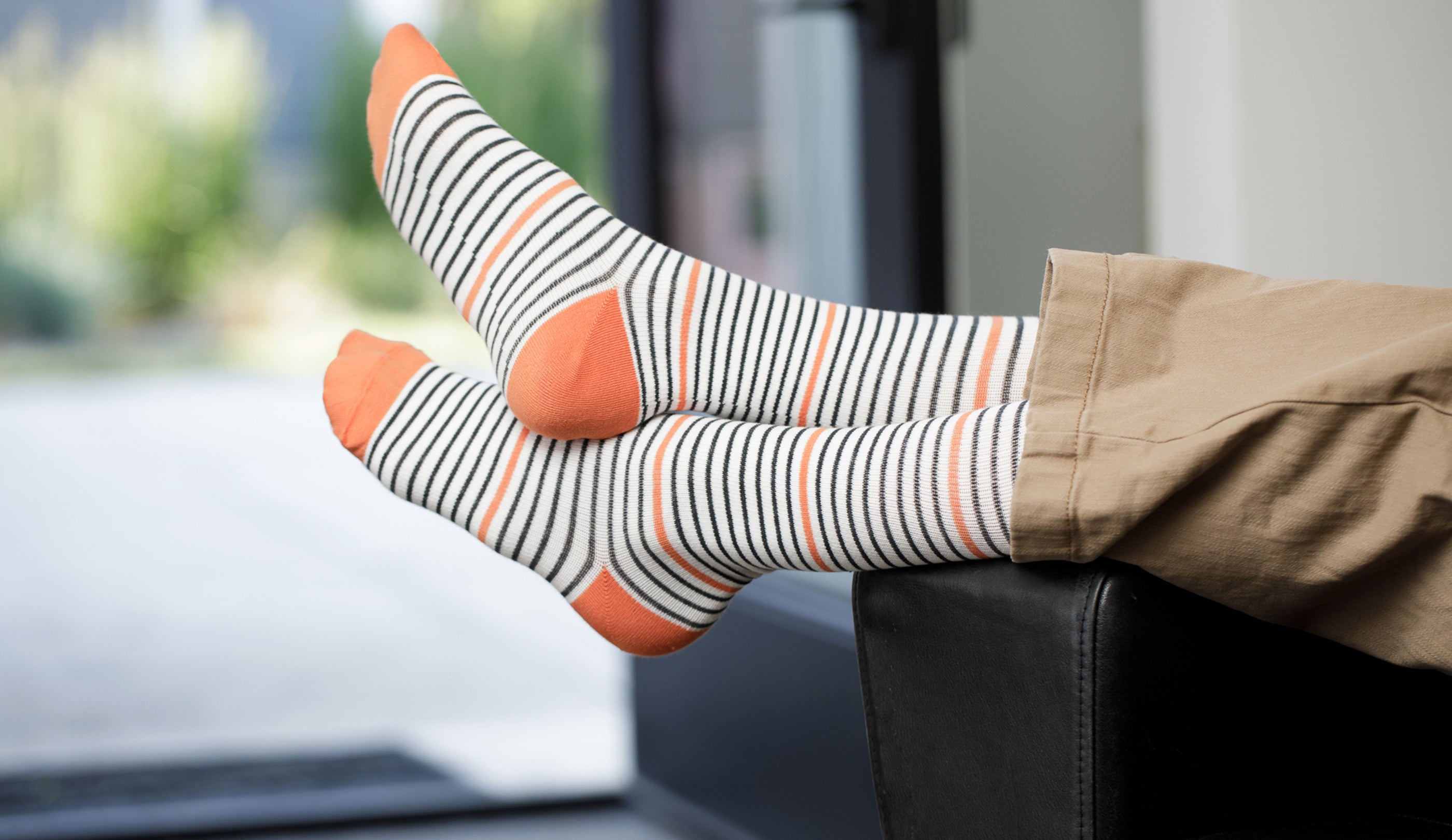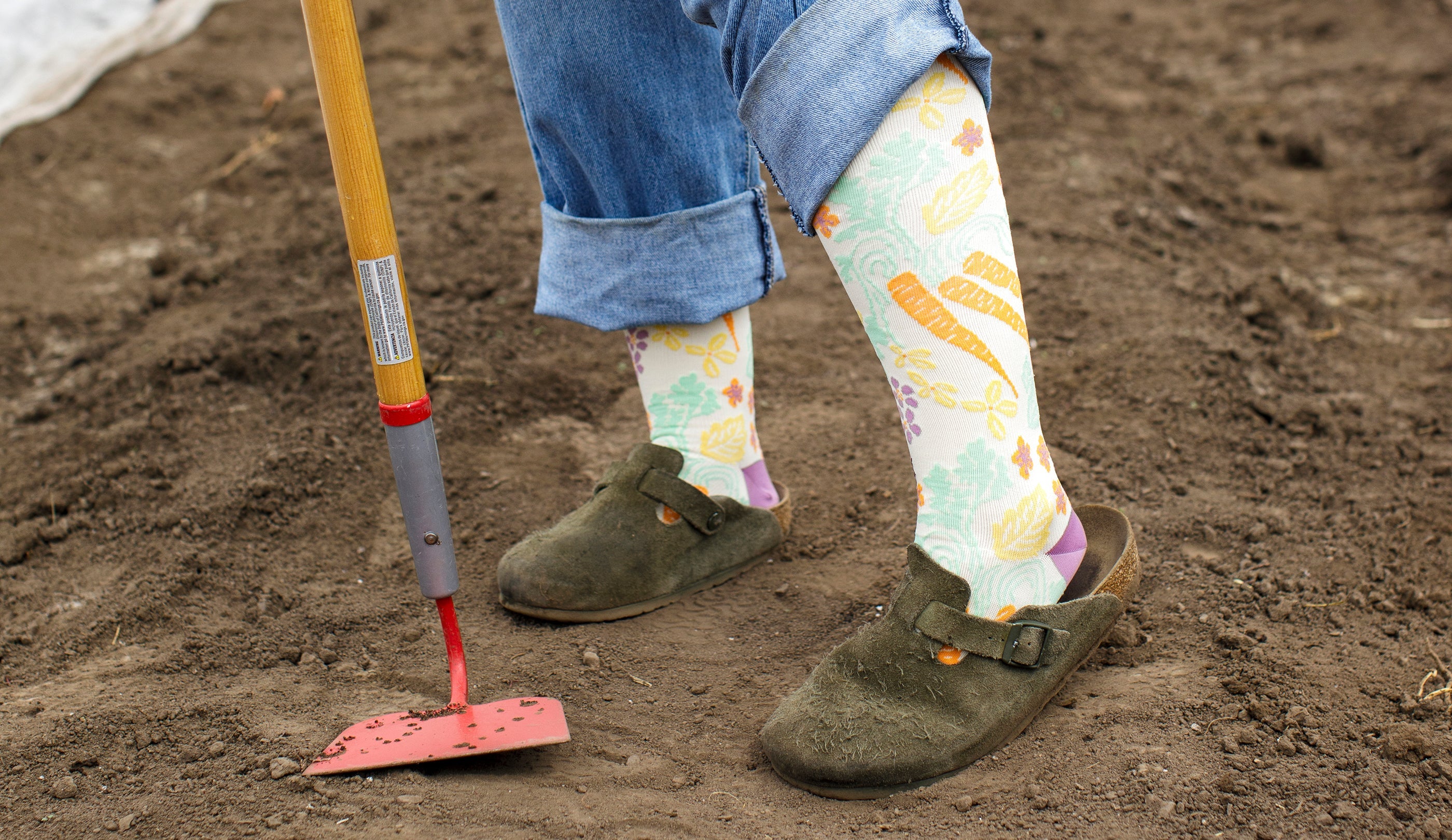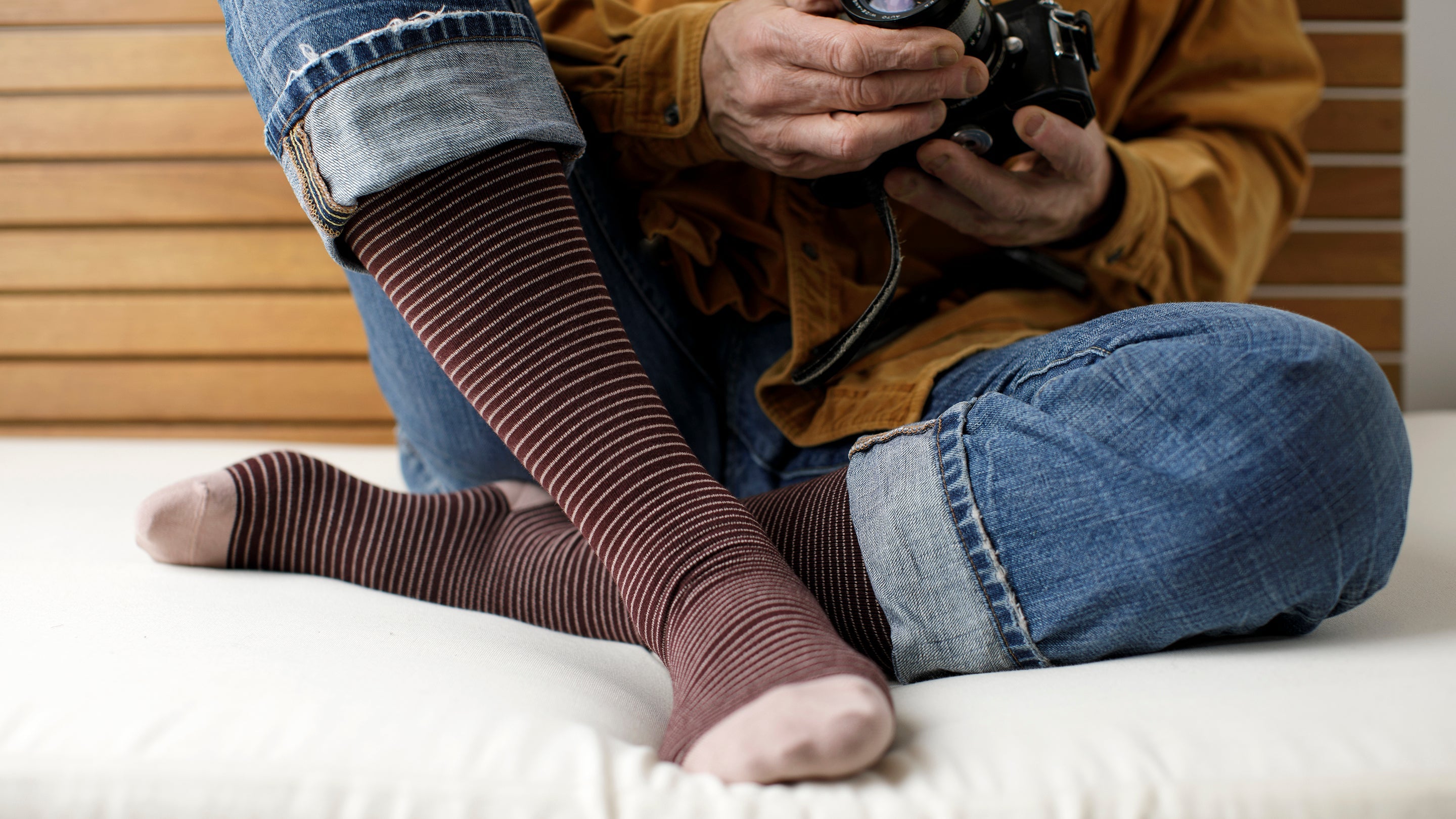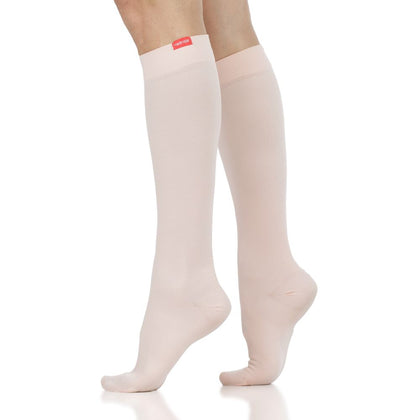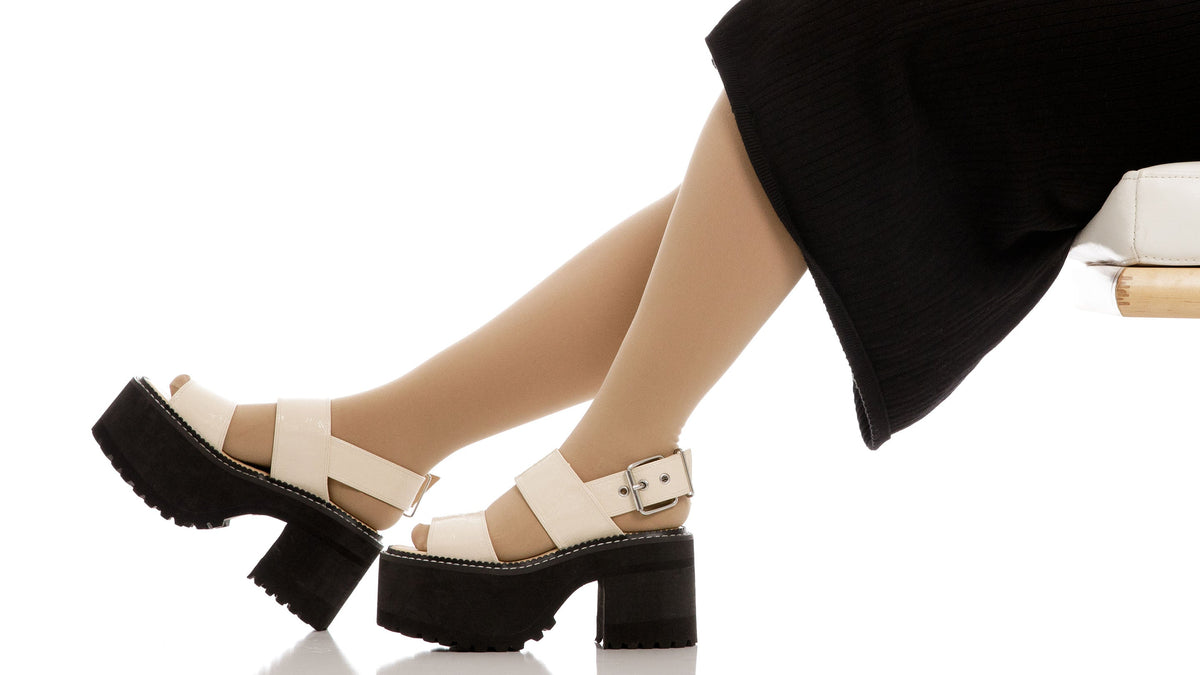

Compression socks, stockings, and tights are essential items that are medically prescribed to prevent or manage circulatory problems (like swelling, deep vein thrombosis, or peripheral artery disease), problems with lymphatic drainage, or recurrent issues like feet swelling from sitting or standing for long periods of time at work. Compression legwear are also amazing recovery aides for casual and professional athletes alike, not to mention a stylish and easy-to-wear garment that helps patients recover from surgery or various lower body injuries.
However, any high-quality compression garment can be costly, especially when you need to wear compression socks all day long and require multiple pairs. So, you may be wondering if some financial support exists for these purchases.
Does Medicare cover compression socks for venous insufficiency, edema, deep vein thrombosis, and other conditions? Medicare has many types of coverage and can be used to get the compression wear you need for particular cases, with the most straightforward being if you have a lymphedema diagnosis.
In this article, we’ll look at the different ways in which you can get Medicare coverage for compression socks and stockings, as well as at alternative funds to use (like FSA or HSA).
Does Medicare Cover Compression Stockings?
Medicare is made up of four parts:
- Part A pays for hospital stays
- Part B covers medical insurance for doctor’s visits, medical expenses, and some vaccines. The expenses covered here can include what’s called “durable medical equipment”
- Part C is also known as Medicare Advantage, offered by private insurance companies. We’ll cover this below
- Part D covers prescription drugs.
Compression stockings and socks, even if prescribed by a doctor, are not part of the original Medicare list of medical expenses (and not considered durable medical equipment, which is generally associated with things like wheelchairs). But, as of 2024, thanks to the Lymphedema Treatment Act, Medicare now covers lymphedema compression stockings under Part B - as long as they’re prescribed by a medical professional.
Additionally, you can get Part B Medicare coverage for your graduated compression socks if they’ve been prescribed for an open venous stasis ulcer. These are caused by chronic venous insufficiency, when venous return doesn’t function correctly and blood pools in the lower leg veins, increasing pressure and creating ulcerations on the skin. This occurs in about 1 to 3 out of every 100 people in the U.S., according to a 2019 article in American Family Physician.

Does Medicare Cover Compression Stockings for Lymphedema?
Lymphedema is a condition where poor lymphatic drainage leads to lymph fluid building up in the tissues and causing swelling and discomfort. Compression stockings for lymphedema are covered by Medicare Part B. You can wear medical grade, prescription-only graduated compression socks for this condition. As part of Medicare, after you meet the Part B deductible, you will have to pay 20% of the Medicare-approved amount for your socks.
However, be sure that you have a diagnosis, and you buy the right pair of compression, which is listed on your prescription. Medicare reimbursement for compression socks or stockings only applies to cases of lymphedema that have been diagnosed and resulted in a compression legwear prescription. Unfortunately, you cannot claim compression socks for preventative treatment with Medicare, like wearing 15-20 mmHg compression socks during the day to prevent blood and lymph pooling in the lower legs.
Does Medicare Cover Compression Stockings for Venous Insufficiency?
When venous insufficiency leads to ankle ulcers, or venous stasis ulcers, then you can claim for prescription compression socks through Medicare Part B. However, you need to be sure that you have a prescription specifically for venous stasis ulcers.
If you suffer from ulcerations caused by the underlying condition of chronic venous insufficiency, the compression stockings may be considered wound dressings, which lets them fall under Medicare. But this is not so straightforward, because graduated compression socks or tights are not “disposable compression material” - so you would need to speak to a medical professional to check this option in more detail.
Does Medicare Cover Compression Stockings for Any Other Conditions?
No, Medicare will only cover compression stockings for lymphedema and could potentially be used for venous stasis ulcers, if confirmed with a medical professional. There are currently no other conditions that you can treat with compression socks and claim for on Medicare, despite the fact that doctors prescribe them for varicose veins, blood clots, and other circulatory problems.
According to MedicareFAQ, Medicare will not cover compression socks for varicose veins, circulation problems, or for prevention of ulcers.
How to Obtain Medicare Coverage for Compression Stockings if You Qualify
Since Medicare covers compression stockings or socks that are specifically prescribed for lymphedema or for venous stasis ulcers, you will need to obtain an official diagnosis and a prescription from a medical professional first.
You can learn how Medicare works on their website. In a nutshell, you will use your prescription to claim on Medicare Part B and will only need to pay 20% of the Medicare-approved amount for your compression garments, after you meet your deductible.
Please note: For your compression socks to qualify for Medicare coverage, they need to be prescription-only, so 30-40 mmHg compression level. You cannot claim for more “casual” everyday wear socks, like 15-20 mmHg.
Other Potential Ways to Receive Financial Assistance for Purchasing Compression Stockings
Medicare Advantage and Supplemental Insurance Plans
The Medicare Advantage plan should provide the same benefits as Original Medicare, which means that it will cover compression socks for lymphedema and venous stasis ulcers, as long as they are prescription-based and for the medically diagnosed condition.
Since 2019, additionally, the Centers for Medicare & Medicaid Services (CMS) passed rules according to which Medicare Advantage plans can expand their covered benefits to “supplemental benefits.” So, you may benefit from a sum of money to use against compression socks, particularly those prescribed by a doctor. You should always check with your Medicare Advantage company to see if this is the case.
Finally, there is a supplemental insurance to Medicare called Medigap. While this is designed to help you save on out-of-pocket costs with the Original Medicare, it only works for Medicare-approved products. Therefore, unfortunately, you could only use Medigap for the same reasons we’ve already covered under Medicare Part B (lymphedema and venous stasis ulcers).
Veterans Affairs (VA)
Eligible military veterans can contact their Veterans Affairs (VA) branch for certain healthcare benefits. On the Veterans Affairs website, diabetic compression socks are listed as an item you may be able to obtain by contacting your VA health care team. Diabetic compression socks may fall under the category of “therapeutic shoes and socks” - so it is worth checking if you can claim for different conditions, too.
Nonprofit Organizations
Some nonprofit organizations linked with your medical condition may be able to help with funding the purchase of compression socks. You would need to check with them directly. Relevant such organizations include the Lymphedema Advocacy Group or the American Diabetes Association.
FSA and HSA Spending Accounts
If you have healthcare plans through your current jobs, there are a few other sources of potential funding for therapeutic compression stockings and socks. The FSA is a Flexible Spending Account which may pay for health care costs. It is an account you put money into, and from which you can submit a claim (through your employer), showing proof of your medical expense and a statement that it hasn’t been covered by your plan. You should then get reimbursed for your cost.
An FSA will pay out for prescription items, but also for “medical equipment” including “supplies like bandages.” The FSA Store lists compression socks in 30-40 mmHg compression level “that are used to treat a medical condition” as eligible for either an FSA, an HSA or an HRA claim.
An HSA - a health savings account - allows you to save for qualified medical expenses, including prescriptions, and reduces your taxable income. It only works together with an HSA-eligible health plan, so make sure you sign up for one first. However, be careful, not everyone can contribute into an HSA, even if you have an HSA-eligible health plan. The prerequisites for contributing to an HSA are:
- Not being enrolled in a health plan sponsored by your spouse or parent that is not an HSA-eligible health plan
- Not being enrolled in Medicare
- Not being able to be claimed as a dependent on someone else’s tax return.
The HRA - a health reimbursement arrangement - is a type of health plan that can be offered by employers to employees. Unlike a traditional health coverage plan through your job, this is a group health plan funded by your employer. You’ll have a fixed dollar amount you can use to pay for qualifying medical expenses. To use the HRA, you’ll need to have healthcare coverage in place, too.
Getting coverage for compression socks and stockings is possible through several mechanisms, which you can check with your employer and healthcare provider. Medicare only covers compression garments used specifically for lymphedema or venous stasis ulcers, but you can also claim reimbursement for diabetes compression socks, if eligible, through the VA. Additionally, some nonprofit organizations offer support for patients using compression therapy to manage the symptoms of the conditions they specialize in. Finally, check whether you can enroll in an HRA, HSA or FSA through your job. You may be able to use these accounts to claim for buying compression socks.

References
Bonkemeyer Millan, S., Gan, R., & Townsend, P. E. (2019). Venous Ulcers: Diagnosis and Treatment. American family physician, 100(5), 298–305. Read it here.
FSAstore.com. (n.d.) Compression Socks: FSA Eligibility. Read it here.
Lim, C. S., & Davies, A. H. (2014). Graduated compression stockings. CMAJ: Canadian Medical Association journal = journal de l'Association medicale canadienne, 186(10), E391–E398. Read it here.
Lymphedema Treatment Act, H.R.3630. 117th Congress (passed November 17, 2022). Read it here.
Medicare.gov. (n.d.) How does Medicare work? Read it here.
Nickles, M. A., Ennis, W. J., O'Donnell, T. F., Jr, & Altman, I. A. (2023). Compression therapy in peripheral artery disease: a literature review. Journal of wound care, 32(Sup5), S25–S30. Read it here.
Partsch, H., Winiger, J., & Lun, B. (2004). Compression stockings reduce occupational leg swelling. Dermatologic surgery: official publication for American Society for Dermatologic Surgery [et al.], 30(5), 737–743. Read it here.

